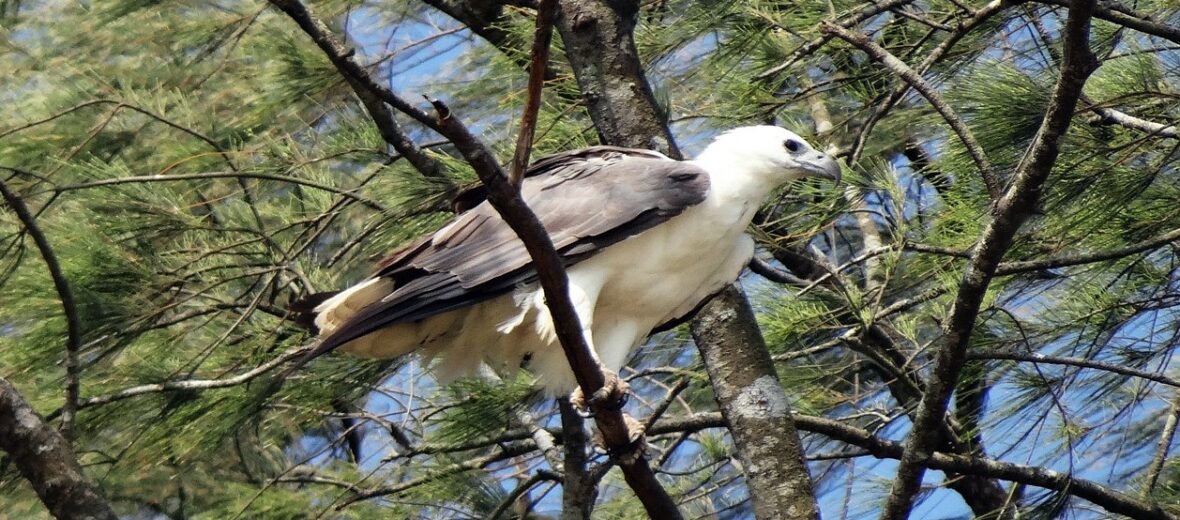
The white-bellied sea eagle, aka the white-breasted sea eagle, is a large raptor that can be found from India, Sri Lanka, through coastal Southeast Asia, to Australia. They prefer estuaries, islands, coastal areas, large inland water bodies, lakes, rivers, and wetlands. Due to their numbers, although falling, these birds of prey are listed as Least Concern by the IUCN.
First the Stats…
Scientific name: Haliaeetus leucogaster
Weight: Up to 6.2 lbs.
Length: Up to 2.75 feet
Wingspan: Up to 7.2 feet
Lifespan: Up to 30 years
Now on to the Facts!
1.) Sea eagles are diurnal (active during the day).
2.) They prey on fish, sea snakes, and carrion (dead animals).
3.) During hunting they will hold their feet so far forward that they are almost under their beak and then strike backwards while beating its wings to lift upwards.
4.) Called “Manulab” by the people of Nissan Island, the white-bellied sea eagle is considered special and it is forbidden to kill one.
5.) White-bellied eagles communicate via a loud, goose-like honking call.
But wait, there’s more on the white-bellied sea eagle!
6.) White-bellied sea eagles are mostly monogamous (mate for life). However, if a mate dies, the surviving member will quickly seek a new partner. Not much for mourning.
7.) During the mating season, the pair will perform incredible acrobatic feats like diving, gliding, and chasing one another while loudly calling to each other. Talon-grappling displays can also be seen. This is where the pair will fly up high before 1 flips upside down and tries to grapple the other’s talons in its own.
Did you know…?
Similar to the behavior of bald eagles, white-bellied sea eagles have been known to steal prey from other sea eagles as well as other predatory birds. This is known as kleptoparasitism. Why hunt when you can steal, eh?
8.) Females lay 2 eggs each season.
9.) The mated pair will typically spend 2 – 3 weeks building and/or renovating their nest before the eggs are laid.
10.) On sunny days, these raptors will fly directly into the sun or at right angles to the sun to avoid casting shadows over the water; which keeps them from alerting their prey of certain doom.
Now a Short White-Bellied Sea Eagle Video!
Also, check out the Critter Science YouTube channel. Videos added frequently!
Want to suggest a critter for me to write about? Let me know here.



